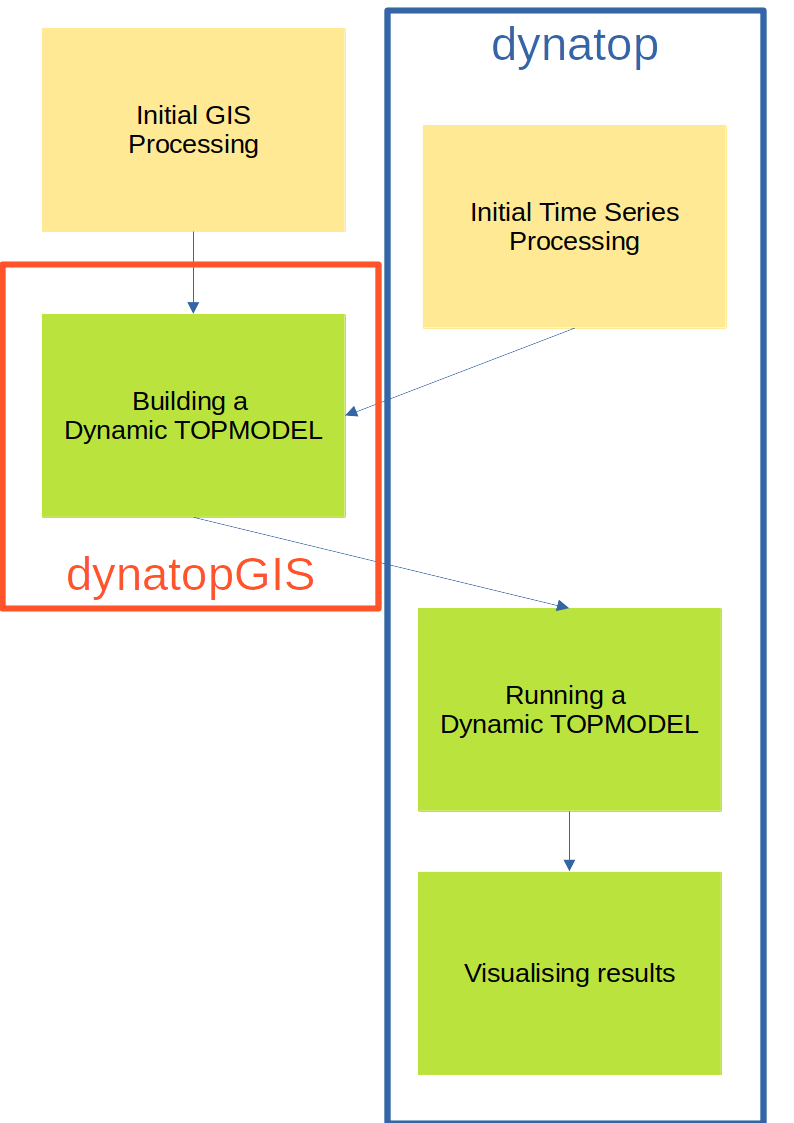dynatopGIS & dynatop
The following schematic outlines the stages resulting a working
Dynamic TOPMODEL for a catchment. It highlights where the
dynatopGIS and dynatop packages fit into this
process.

Schematic of a Dynamic TOPMODEL construction
As we will see in the example the dynatopGIS
package can help
- Compute standard variables for classification (such as the topographic index)
- Compute the spatial ordering of the HRUs
- Build classifications of the catchment
- Construct models suitable for
dynatop
The dynatop
package allows simulation and visualisation of Dynamic TOPMODELs as well
as providing some helper for processing time series input data. Although
in this training presumes that model for dynatop are
generated using dynatopGIS this need not be the case so
long as the inputs to dynatop are of the correct
format.
Implementation notes
The dynatopGIS and dynatop packages
implement structured, object orientated, data flows. The packages are
written using the object orientated framework provided by the
R6 package. This means that some aspects of working with
the objects may appear idiosyncratic for some R users. In this training
these problems are largely obscured, except for the call structure.
However, before adapting the code, or doing more complex analysis users
should read about R6 class objects (e.g. in the
R6 package vignettes or in the Advanced R book). One
particular gotcha is when copying an object. Using
my_new_object <- my_objectcreates a pointer, that is altering my_new_object also
alters my_object. To create a new independent copy of
my_object use
my_new_object <- my_object$clone()